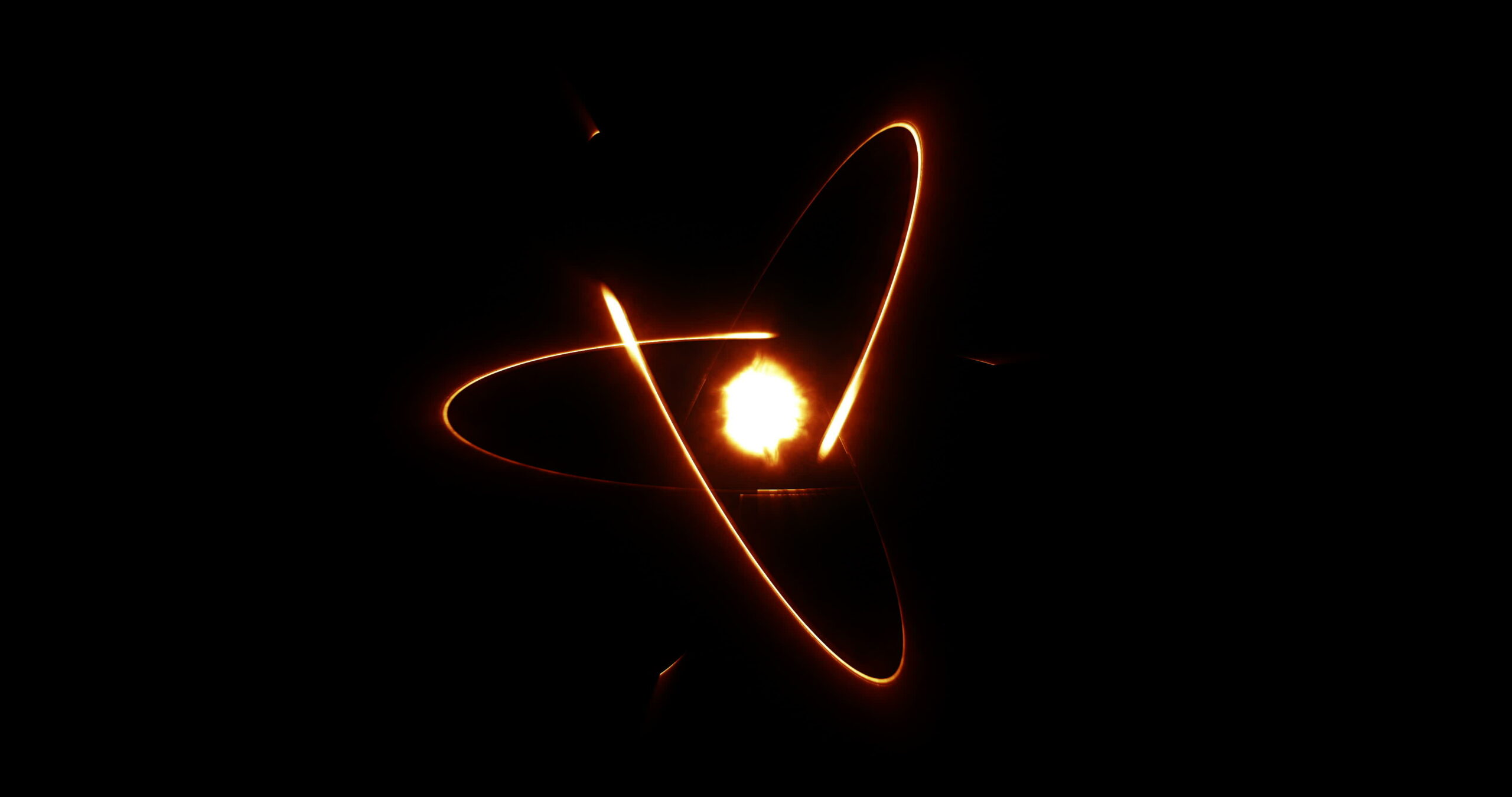When envisioning an atom, it is remarkably easy to conjure up the image of electrons whirling around a central nucleus, akin to planets revolving around a sun. This simplistic representation, however, belies the intricate reality of atomic structure. In this article, we shall delve into the complexities of atoms, exploring not only their component parts but also the relationships and forces that govern their behavior. Are we, therefore, oversimplifying the atom by merely picturing electrons in orbit, or does this conception undermine the profound and nuanced nature of atomic physics?
To address this question, let us first demystify the elemental constituents of an atom. At its core, the nucleus is composed primarily of protons and neutrons, collectively referred to as nucleons. This central mass is surrounded by a cloud of electrons, which, rather than following designated paths, exist in probabilistic distributions described by quantum mechanics. This insight prompts us to reconsider the classical “solar system” analogy and embrace a more complex narrative regarding atomic structure.
The protons, positively charged particles, are balanced by electrons, which possess a negative charge. Neutrons, lacking any charge, provide additional mass and stability to the nucleus. The number of protons within the nucleus defines the elemental identity; for instance, hydrogen possesses one proton, while carbon is characterized by six. This integral relationship between protons and the element’s identity leads us to ponder the significance of atomic number and its role in chemical behavior.
Yet, the interactions within the nucleus take center stage in our understanding of atomic structure. The strong nuclear force, a robust and short-range interaction, binds protons and neutrons together, overcoming the electrostatic repulsion that arises due to the repulsion between like charges. This occurrence raises interesting questions regarding stability: what factors drive the stability of certain isotopes while rendering others radioactive? This unyielding inquiry reveals the intricate dance of forces at play and leads us further into the realm of quantum mechanics, where uncertainties lurk at every corner.
As we navigate the intricacies of atomic particles, we encounter quantum numbers that serve as descriptors for the behavior of electrons within atoms. These quantum numbers dictate the electron’s energy level, angular momentum, and spatial orientation. Understanding these characteristics allows us to grasp the concept of electron shells and subshells, which elucidate the arrangement of electrons in various configurations around the nucleus. Notably, the electron cloud is defined by orbitals, which are regions of space where the likelihood of finding an electron is maximized—rather than distinct paths, as classical mechanics suggests.
The Pauli Exclusion Principle and Hund’s Rule further elaborate on electron configuration, emphasizing the importance of electron pairing and the filling sequence of orbitals. Intriguingly, this inherent structure illuminates the behavior of atoms during chemical reactions, as atoms strive to attain a stable electron configuration, often resembling noble gases. This electron transfer or sharing manifests in ionic and covalent bonds, resulting in the formation of molecules that underpin the very fabric of matter.
This leads us to contemplate the notion of electronegativity and its effects on atomic interactions. Different elements exhibit varying tendencies to attract electrons, influencing their reactivity and bonding behavior. These differences propagate throughout the periodic table, wherein elements are organized not just by atomic number but by their similar properties, thereby unveiling patterns that dictate the chemistry of life itself. How often do we engage in the playful exploration of this relationship without fully comprehending the underlying principles?
Moreover, as we probe deeper into atomic structures, we must not overlook the role of quantum mechanics in explaining phenomena such as spectroscopic emissions, which emerge when electrons transition between defined energy levels. The production of spectral lines allows scientists to identify elements within distant stars, further reinforcing the intimate connection between atomic structure and cosmic exploration. Are we merely witnessing the synergy of light and matter, or is there a deeper story of atomic harmony embedded in these interactions?
As our discourse progresses, we should acknowledge the technological implications of our understanding of atomic structure. Nanotechnology, materials science, and quantum computing hinge upon atomic and subatomic interactions, culminating in groundbreaking advancements that shape contemporary society. In creating new materials or enhancing computational capabilities, we unlock the potential to harness atomic properties for transformative applications. But such progress invites reflection: are we prepared to navigate the ethical implications of manipulating atomic structures?
Ultimately, the structure of atoms extends far beyond the simplistic portrayal of electrons spinning around a nucleus. An intricate interplay of forces, quantum mechanics, and fundamental principles choreographs a richly nuanced tableau depicting the very essence of matter. By embracing a holistic understanding of atomic architecture, we unveil not only the minutiae of chemical behavior but also the profound philosophical questions that arise when contemplating the universe at its most fundamental level.
In conclusion, while contemplating the movement of electrons may be an enticing visual, it is crucial to recognize the complexities inherent in atomic structure. The forces, principles, and relationships that govern atomic behavior present a tapestry of scientific inquiry that expands our comprehension of the universe. By bridging the gap between observable phenomena and theoretical constructs, we are compelled to recognize the marvels of the atomic world—indeed, a realm that challenges us to expand beyond simplistic models and invite deeper understanding.












